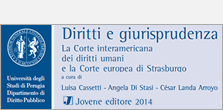PIERONI S. – Ne bis in idem sanzionatorio. La problematica applicazione nella sentenza Jóhannesson c. Islanda dei criteri elaborati dalla Grande Camera
Autore dell’articolo/Author
Serenella Pieroni
Abstract
Introduzione.
La Prima Sezione della Corte EDU si è trovata a fare applicazione per la prima volta dei “criteri-guida” forniti dalla Grande Camera della Corte EDU nella nota sentenza A. e B. c. Norvegia del 15 novembre 2016 in materia di ne bis in idem (art. 4, Protocollo 7 alla CEDU), questa volta ravvisando, all’unanimità, la violazione della garanzia convenzionale sotto il profilo dell’assenza di una “connessione sostanziale e temporale sufficientemente stretta” tra i due procedimenti sanzionatori.
Peraltro, la pronuncia risulta di particolare interesse, in quanto, sottolineandosi le differenze tra il caso esaminato e quello deciso dalla Grande Camera, se, da un lato, sembra indicare agli interpreti i limiti entro i quali va ricondotto il criterio della “connessione sostanziale e temporale sufficientemente stretta” di cui alla sentenza A. e B. c. Norvegia, dall’altro, come vedremo, non chiarisce i parametri definiti per l’individuazione dei medesimi.
2. Il ne bis in idem ‘sanzionatorio’ nella giurisprudenza della Corte EDU.
La controversia rappresenta ulteriore declinazione del riconoscimento da parte della Corte EDU della natura “sostanzialmente penale” di molte sanzioni tradizionalmente qualificate nel nostro ordinamento come amministrative , collocandosi nel delicato e controverso dibattito della compatibilità del principio del ne bis in idem (art. 4 del Protocollo n. 7) con il c.d. doppio binario sanzionatorio. Difatti, l’operata riqualificazione, secondo i parametri della Corte EDU, delle sanzioni amministrative in sanzioni penali, comporta l’applicazione, per il medesimo fatto, di due misure afflittive, ancorché una formalmente amministrativa, con conseguente illegittimità convenzionale di siffatto bis in idem sanzionatorio.[…]
The First Section of the European Court of Human Rights applied for the first time the “guiding principles” provided by the Grand Chamber of the Court in the judgment A. and B. v. Norway of 15 November 2016 on ne bis in idem (Article 4, Protocol 7 ECHR), recognizing in this case a violation of the conventional guarantee due to the absence of a ” sufficiently close connection in substance and time” between the two sanctioning proceedings.
Moreover, the ruling of particular interest, because it sets out various issues stemming from the fact that, on the one hand, it seems to indicate the limits within which the criterion of the “sufficiently close connection in substance and time” can be applied (as in A and B. v. Norway), on the other hand, it does not provide defined parameters to identify them, grounding, instead, on the basis of factual circumstances that force the interpreter to elaborate case by case the rule in the specific case.[…]













